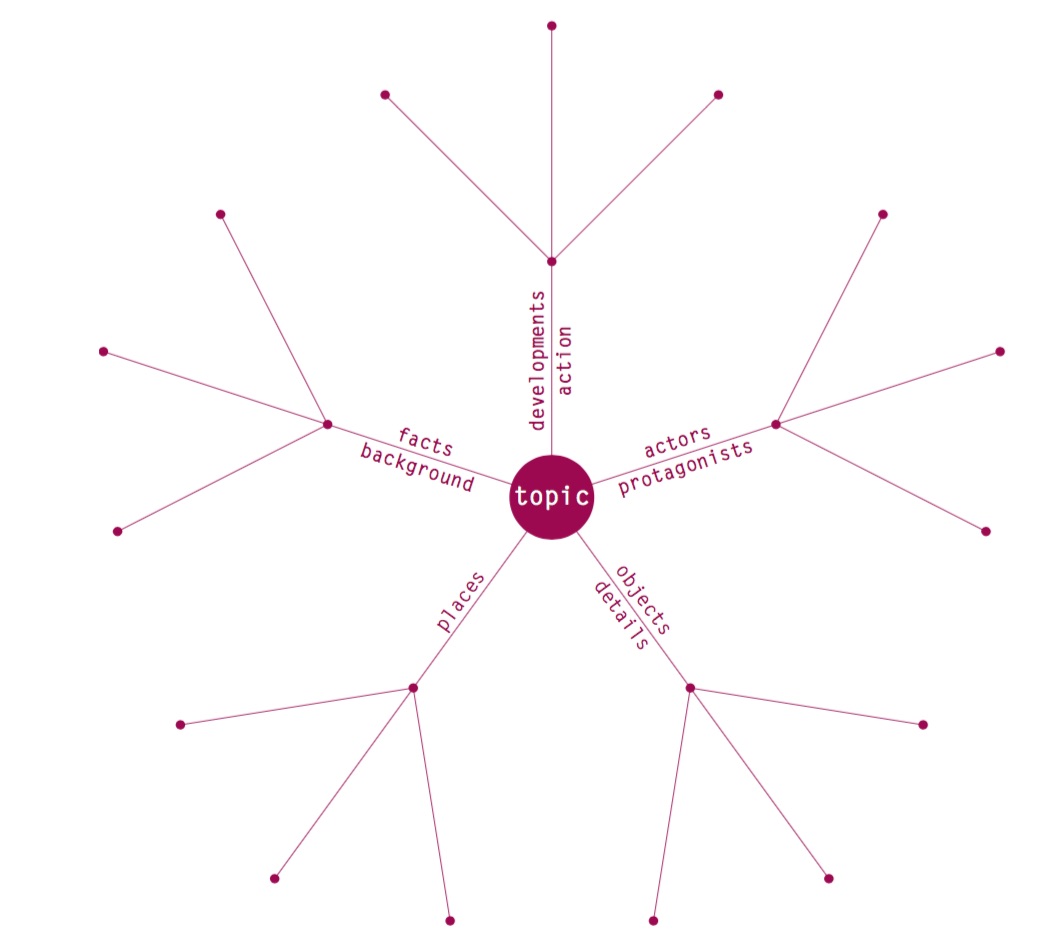The immanent shortage of water in the MENA region has often been covered in the Media. This means that just stating facts on such a topic will likely not draw the interest of readers nor will it engage them to act to improve the current situation. The same applies for many water and sanitation related topics (e.g. the link between poor sanitation and health problems). But this does not make these topics less relevant. Hence, it is important to find interesting and relevant angles through which you can shed new light on a given topic. Here is where you can adapt the mindmapping technique to brainstorm around your topic of interest and visually organize information to identify interesting angles for your story. This tool provides an adaption of the regular mindmapping technique that facilitates the generation of ideas around aspect of a given topic that can be used to identify interesting new angles for your story.
People are most often interested in something new. However, when it comes to topics that have been reported on many times before, it is not always easy to find something new to interest one’s audience or readers. This might include subjects like alarming scenarios regarding water availability, climate change, or pollution challenges. Other examples include water tariffs, wastewater management or the need to conserve water.
In these cases, mind mapping can help journalists and editors come up with new and more interesting angles on a much-reported subject.
A mind map is a diagram used to visually organize information. When it comes to water reporting mind mapping encourages free association on a subject. In particular, it attempts to come up with associations that might make for a good story by simply encouraging the journalist to think of anything and everything around a number of key words or catchphrases.
With time and a little patience, mind mappers who focus on a subject – an interesting actor (e.g. an innovative water start-up), for example – will eventually come up with new ideas around that subject – for example, the personal story that motivated an entrepreneur to found a business in the water sector.
Mind mapping helps uncover surprising new viewpoints and different perspectives on a theme.
Step 1: Topic first. To discover new angles you place a word or image in the middle of the page, that symbolises the subject you want to think about.
Step 2: Establish sub-centres that structure your mind map into sections that could be used as angles for a story (compare figure below). These include but are not limited to: developments and actions, actors and protagonists, objects and details, places, and background information and facts.
Step 3: Put down all ideas that emerge for the different sections without judgement or evaluation. As ideas emerge, write one or two word descriptions of ideas on lines branching outwards. Allow the ideas to expand into sub-branches.
Your brain works best in five to seven minute bursts, so capture the ideas as rapidly as possible. Organization can always come later; the first requirement is to get the ideas out of your head and onto the paper (FAO 2008). Use the resulting mind map to identify interesting angles for the topic you want to write about.

Shortcuts to Journalism: The Basics of Print, Online and Broadcast Reporting
When basic questions about journalism come up, this handbook, written and produced by Media in Cooperation and Transition (MICT), provides clear, brief and precise answers. Shortcuts to Journalism isn’t just for journalists – it’s also helpful for non-journalists. Download the English version here or the Arabic version here.
Schmidt, E., Tirok, M. and Bösch, M. (2016): Shortcuts to Journalism: The Basics of Print, Online and Broadcast Reporting. Berlin, Germany: Media in Cooperation and Transition gGmbH PDFMind Mapping. Learning Guide
This four-page document provides good advice on how to use mind mapping, presents some nice examples and describes the benefits of using mind maps.
VELLIARIS, D. (2009): Mind Mapping. Learning Guide. Aidelade: The University of Adelaide URL [Accessed: 07.07.2019]

